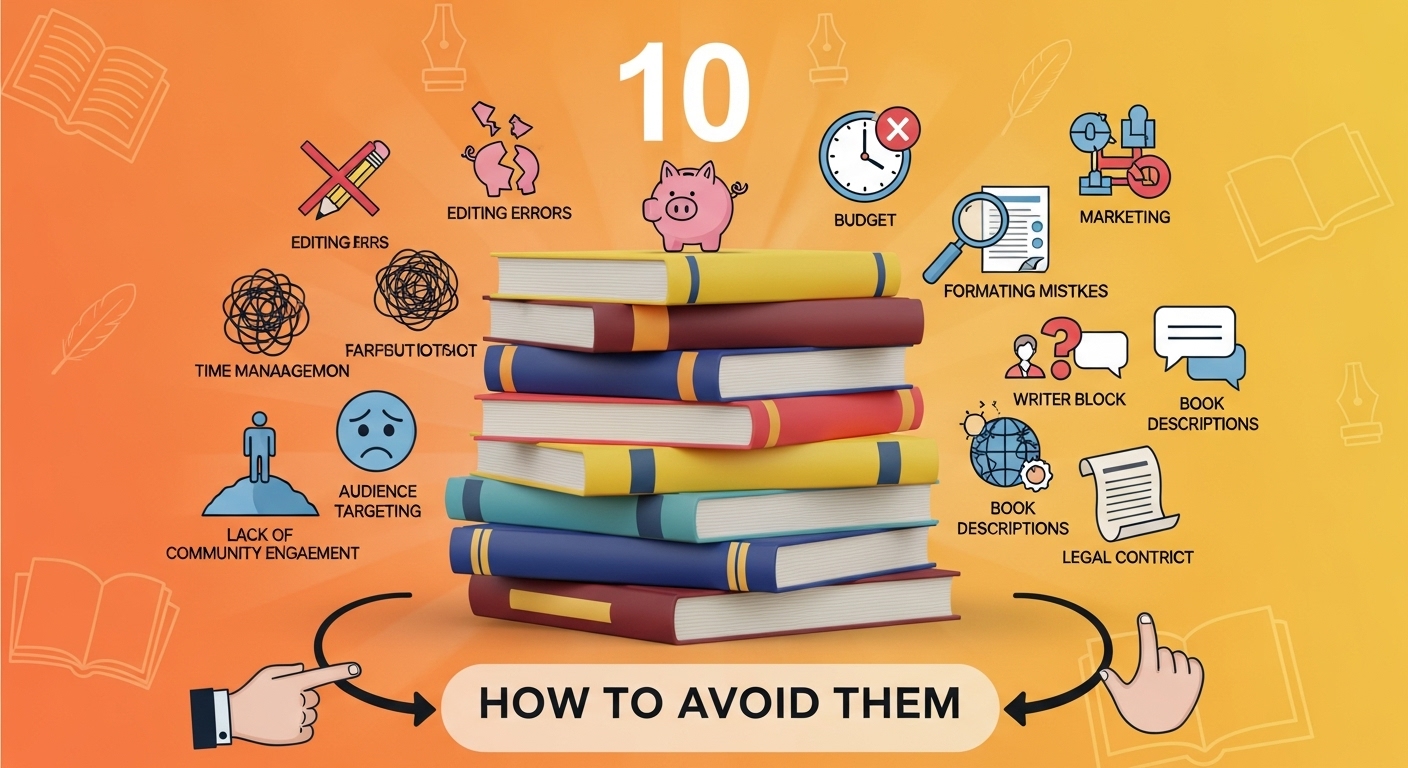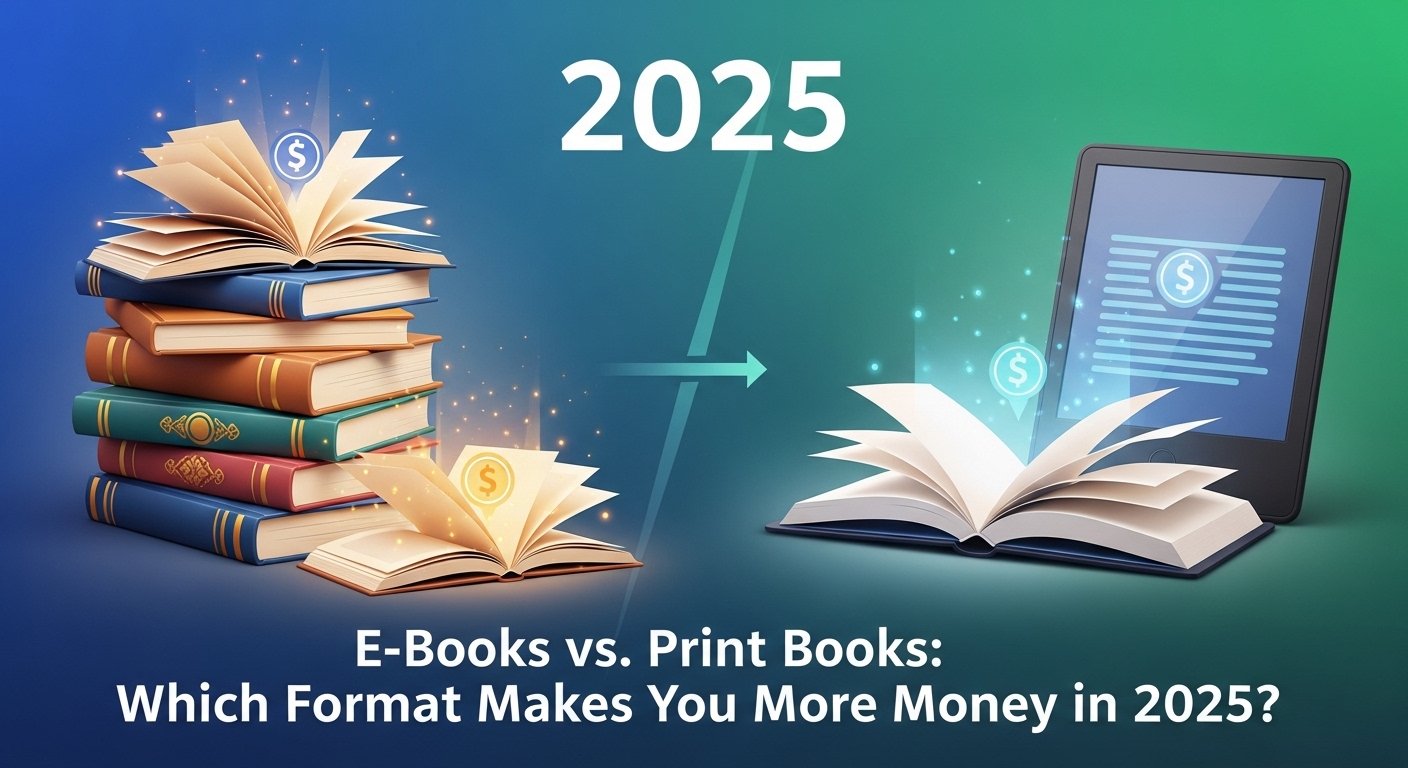The Thrilling, Terrifying World of Self-Publishing
So, you’ve done it. You’ve poured your heart, soul, and countless hours into writing a book. The final period is in place, and the sense of accomplishment is immense. Now comes the next exciting step: sharing your masterpiece with the world through self-publishing. The world of e-books & self-publishing has democratized the industry, giving authors unprecedented control and opportunity. However, this path is also riddled with potential pitfalls that can trip up even the most talented writers. It’s easy to get so caught up in the creative process that you overlook the crucial business and marketing aspects of publishing.
But don’t worry. Forewarned is forearmed. By understanding the common mistakes new authors make, you can sidestep them and give your book the best possible chance of success. This guide will walk you through the ten most frequent errors and, more importantly, provide actionable advice on how to avoid them. Let’s turn your publishing dream into a triumphant reality.
Mistake #1: Skipping Professional Editing
You’ve read your manuscript a hundred times. You’ve run it through spell check. It’s perfect, right? Wrong. This is perhaps the single most damaging mistake an author can make. Nothing screams ‘amateur’ louder than a book riddled with typos, grammatical errors, and clunky sentences. Your credibility as an author is on the line with every word.
Why It’s a Problem
Readers are unforgiving. A poorly edited book is distracting and frustrating to read. It pulls them out of the story and can lead to scathing reviews that will tank your book’s ratings before it even has a chance to find its audience. You only get one chance to make a first impression.
How to Avoid It
Budget for a professional editor. It’s a non-negotiable investment. There are several types of editing, and you might need more than one:
- Developmental Editing: Focuses on the big picture—plot, character arcs, pacing, and structure.
- Copy Editing: Corrects grammar, spelling, punctuation, and syntax errors.
- Proofreading: The final polish to catch any lingering typos or formatting issues before publication.
Find a reputable editor through freelance platforms like Upwork, Reedsy, or by asking for recommendations in author communities.
Mistake #2: DIY Cover Design (That Looks DIY)
They say not to judge a book by its cover, but in the crowded digital marketplace, everyone does. Your cover is your number one marketing tool. It’s the first thing a potential reader sees, and it has milliseconds to grab their attention and convey the book’s genre and tone.
Why It’s a Problem
A low-quality, homemade cover suggests a low-quality book. It can look out of place, fail to meet genre conventions, and ultimately repel the very readers you’re trying to attract. Even the best story will languish if it’s wrapped in a poor package.
How to Avoid It
Hire a professional cover designer who specializes in your genre. Study the bestsellers in your category on Amazon. What do their covers have in common? A professional designer understands typography, imagery, and genre expectations. This is another essential investment that will pay for itself in sales.
Mistake #3: Neglecting Professional Formatting
Formatting is the invisible art of book production. When it’s done well, no one notices it. When it’s done poorly, it’s a nightmare for the reader. This applies to both e-books and print-on-demand paperbacks. Inconsistent spacing, weird fonts, and a non-existent table of contents can ruin the reading experience.
Why It’s a Problem
Bad formatting makes your book look unprofessional and can even render it unreadable on certain devices. Readers might leave negative reviews citing formatting issues, which directly impacts your book’s reputation and sales.
How to Avoid It
While you can learn to format your book using tools like Vellum, Scrivener, or Kindle Create, it has a learning curve. If you’re not tech-savvy, consider hiring a professional formatter. They will ensure your e-book looks great on any Kindle, tablet, or phone, and that your print book’s interior is clean and professional.
Mistake #4: Ignoring Keyword and Category Research
Uploading your book to a platform like Amazon KDP involves more than just hitting ‘publish’. You need to tell the platform’s algorithm what your book is about so it can be shown to the right readers. This is done through keywords and categories.
Why It’s a Problem
Choosing broad, overly competitive categories or irrelevant keywords means your book will be lost in a sea of millions of other titles. It’s like hiding your book on a dusty shelf in the back of a massive library. No one will find it organically.
How to Avoid It
Dedicate time to research. Use tools like Publisher Rocket or simply browse Amazon to see what categories and keywords successful books in your genre are using. Look for niche categories where you have a better chance of ranking. Think like a reader: what terms would they search for to find a book like yours? Use all available keyword slots with relevant, specific phrases.
Mistake #5: Writing a Weak Book Description
After your cover, your book description (or blurb) is the most important piece of sales copy. It’s your elevator pitch. It needs to hook the reader, introduce the central conflict or promise, and leave them desperate to know what happens next.
Why It’s a Problem
A boring, confusing, or typo-filled description will kill a potential sale instantly. If you can’t even summarize your book in a compelling way, why should a reader invest their time and money in reading the whole thing?
How to Avoid It
Study the blurbs of bestsellers in your genre. Notice the structure: a compelling hook, a brief introduction to the protagonist and their world, the inciting incident, the stakes, and a final, tantalizing question. Write multiple drafts. Read it aloud. Get feedback from others to ensure it’s exciting and clear.
Mistake #6: Setting the Wrong Price
Pricing strategy is a delicate balance. Price your e-book too high, and you’ll scare away potential readers who don’t know you. Price it too low, and you devalue your work and miss out on revenue. Many new authors either undervalue their work or get greedy.
Why It’s a Problem
Incorrect pricing can cripple your sales and income. It also sends a message to the market about your book’s perceived value. It’s a key part of your overall marketing strategy in the e-books & self-publishing landscape.
How to Avoid It
Research comparable books in your genre and length. See what established authors and new authors are charging. A common strategy for a debut novelist is to price an e-book between $2.99 and $4.99, which maximizes the royalty rate on platforms like Amazon KDP. Consider a launch-week discount or a temporary price of $0.99 to attract initial readers and reviews.
Mistake #7: Having No Marketing Plan
Many authors believe their job is done once the book is written. They upload it, sit back, and wait for the sales to roll in. This is the ‘publish and pray’ method, and it almost never works. Marketing is not something you do after you publish; it’s something you start long before.
Why It’s a Problem
Without marketing, your book is invisible. No one will know it exists. The initial sales spike from friends and family will quickly fade, and your book will sink into obscurity.
How to Avoid It
Create a marketing plan at least three to six months before your launch date. Key components include:
- Building an author platform: Start an email list, create a simple website, and be active on one or two social media platforms where your target readers hang out.
- Engaging with your audience: Share your journey, offer valuable content, and build a community around your work.
- Planning your launch: Coordinate promotional activities like a blog tour, paid ads (like Amazon or Facebook Ads), and newsletter swaps with other authors.
Mistake #8: Underestimating the Power of a Launch Team
A launch team, also known as an ARC (Advanced Reader Copy) team, is a group of dedicated readers who agree to read your book before it’s released and leave an honest review on launch day. Those first few reviews are critical for social proof.
Why It’s a Problem
A book with zero reviews looks risky to a potential buyer. Reviews build trust and credibility. Without them, the Amazon algorithm is less likely to show your book to new readers, and your paid advertising will be less effective.
How to Avoid It
Start building your launch team early. These can be fans from your email list, social media followers, or people from reader groups. Create a simple application process, provide them with a free digital copy of your book a few weeks before launch, and communicate with them clearly about when and where to leave their review.
Mistake #9: Ignoring the Business Side of Publishing
When you self-publish, you are not just an author; you are a business owner. You are the CEO of your own publishing empire. This means you need to think about things like budgets, intellectual property, and long-term strategy.
Why It’s a Problem
Failing to treat your writing as a business can lead to financial loss and missed opportunities. You might overspend on services you don’t need or fail to plan for the next book in a series, losing reader momentum.
How to Avoid It
Create a simple business plan. Set a budget for production (editing, cover, formatting) and marketing. Keep track of your income and expenses. Understand the basics of copyright. Think about your long-term goals. Do you want to write a series? Build a brand? This mindset shift is crucial for sustainable success.
Mistake #10: Giving Up Too Soon
Your first book might not be a runaway bestseller. Your launch might be quieter than you hoped. It’s easy to get discouraged and feel like a failure. Many authors quit after their first or second book, just before they might have found their stride.
Why It’s a Problem
Success in e-books & self-publishing is often a long game. It’s about building a backlist of quality books, growing your audience over time, and learning from your mistakes. Giving up too early means you never give yourself the chance to succeed.
How to Avoid It
Celebrate every small win. Focus on writing the next book. Each book you publish is a new asset and another entry point for readers to discover you. Analyze your results, see what worked and what didn’t, and apply those lessons to your next launch. Stay connected with other authors for support and remember why you started writing in the first place.
Your Self-Publishing Adventure Awaits
Navigating the world of self-publishing can feel overwhelming, but it doesn’t have to be. By avoiding these ten common mistakes, you are already miles ahead of the competition. Remember that publishing is a marathon, not a sprint. Invest in quality, build your author platform, market your work strategically, and most importantly, keep writing.
Your story deserves to be read. By treating your book with the professionalism it deserves, you’re not just publishing a book; you’re launching a career. Now go forth and conquer the bookshelf!


